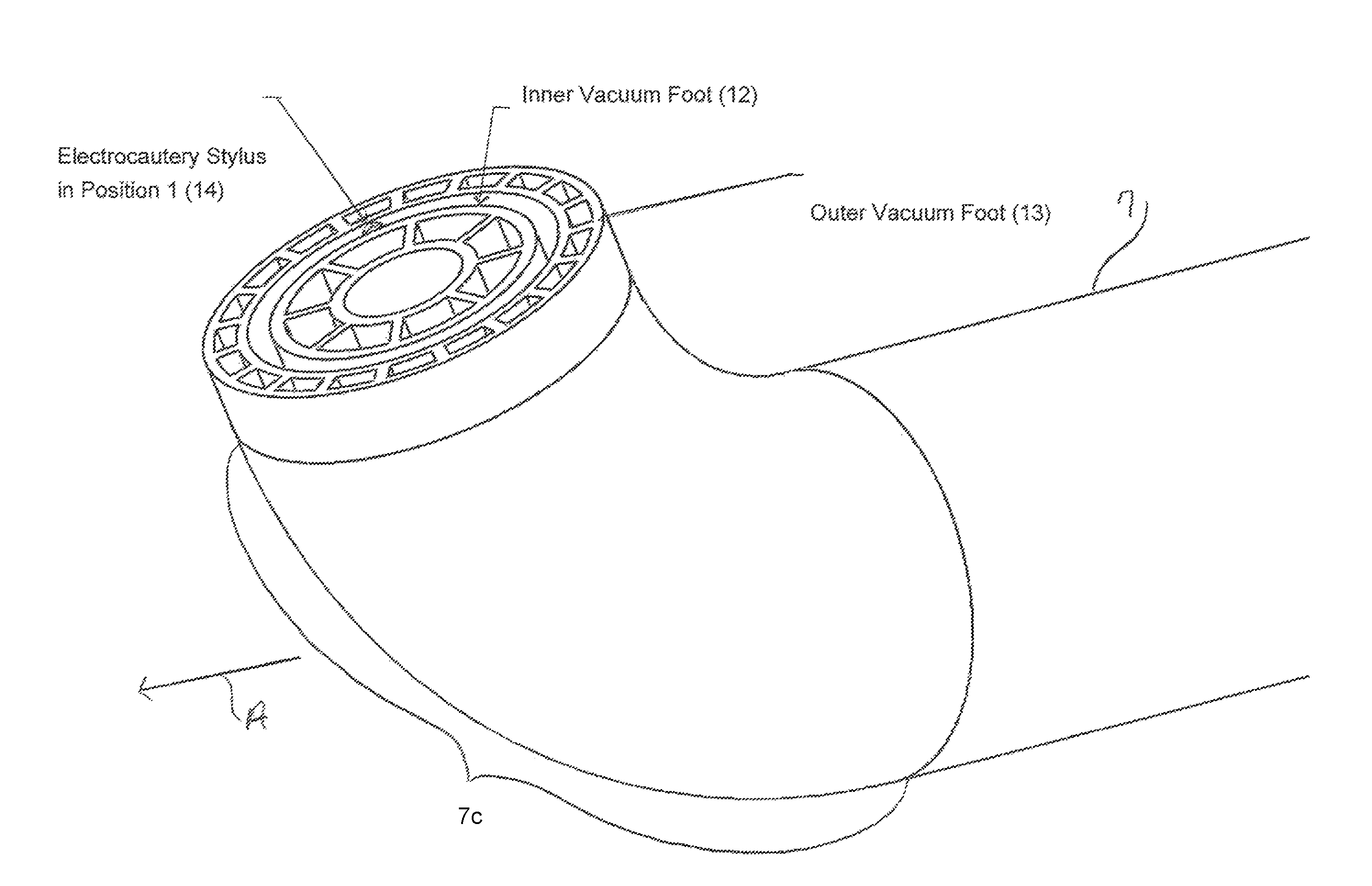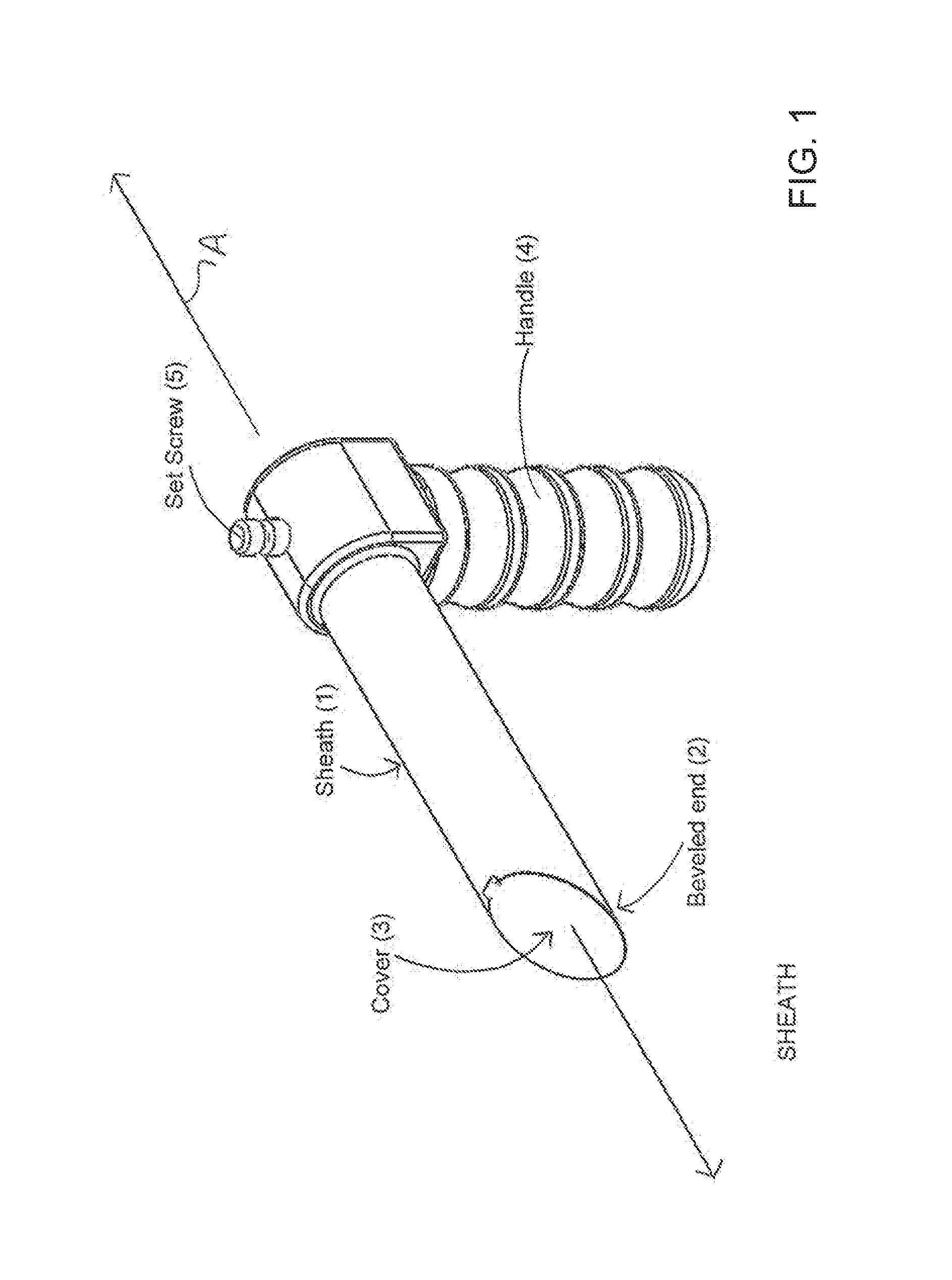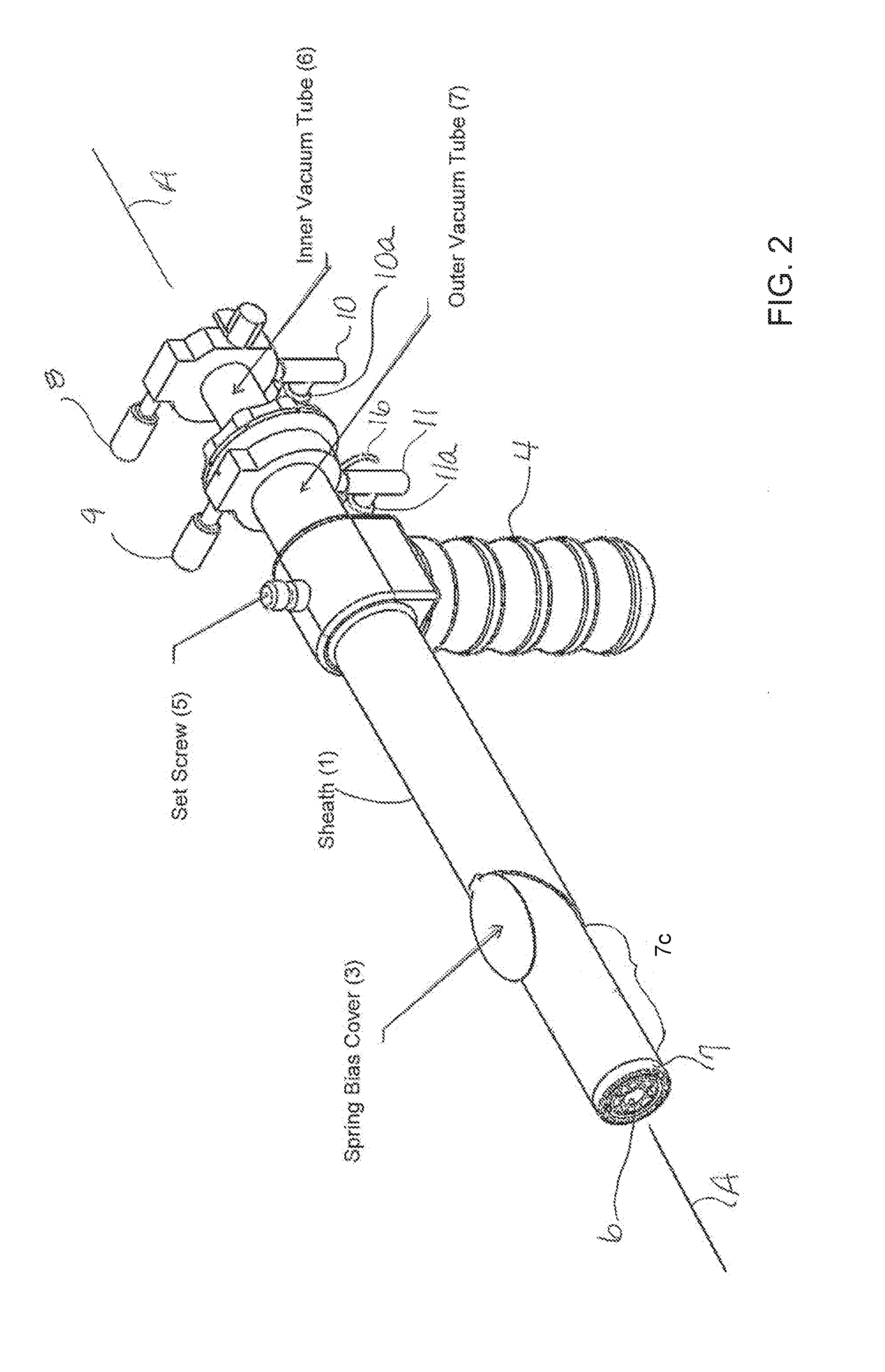Dual vacuum device for medical fixture placement including for thoracoscopic left ventricular lead placement
a vacuum device and lead placement technology, applied in the field of vacuum devices for placement of medical fixtures including for thoracoscopic left ventricular lead placement, can solve the problems of inability to achieve successful technique, difficulty in achieving endocardial technique, and insufficient strength to steer the
- Summary
- Abstract
- Description
- Claims
- Application Information
AI Technical Summary
Benefits of technology
Problems solved by technology
Method used
Image
Examples
Embodiment Construction
[0104]In accordance with the foregoing summary, the following provides a detailed description of the preferred embodiment, which is presently considered to be the best mode thereof.
[0105]As used herein the distal end refers to the working end or patient end, while the proximal end refers to the operator end or actuator end from which the device of the present invention may be operated. The handle as shown in the described embodiment is on the side of the device referred to as the bottom side or the ventral aspect. The side opposite the bottom side is referred to as the top side or dorsal aspect. The right side is the side on the right hand when looking from the operator end, end-on. Conversely, the left side is the side on the left hand when looking from the operator end, end-on.
[0106]FIG. 1 is a first side lateral perspective view of an elongated sheath body 1 for a device in accordance with one embodiment of the present invention, having longitudinal axis A extending from the prox...
PUM
 Login to View More
Login to View More Abstract
Description
Claims
Application Information
 Login to View More
Login to View More - R&D
- Intellectual Property
- Life Sciences
- Materials
- Tech Scout
- Unparalleled Data Quality
- Higher Quality Content
- 60% Fewer Hallucinations
Browse by: Latest US Patents, China's latest patents, Technical Efficacy Thesaurus, Application Domain, Technology Topic, Popular Technical Reports.
© 2025 PatSnap. All rights reserved.Legal|Privacy policy|Modern Slavery Act Transparency Statement|Sitemap|About US| Contact US: help@patsnap.com



